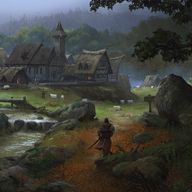The start of the Oceanykan Middle Ages is characterised by the rapid growth of agriculture and sedentarism in the 11th century. Two particular events are widely believed to have kickstarted this process; Firstly, the settling of northern Australia by sedentary societies, which set up trade routes to the south. This allowed the continent's more developed regions to have diplomatic and commercial contact with the outside world. There was also Oceanykan Involvement in the Chola Invasion of Srivijaya, an event which finally connected these states with their counterparts in the Oceanykan continent. Technological, scientific and cultural progression would begin to accelerate again, eventually reaching parity with nearby polities in the Malay archipelago, India and East Asia. These trade routes eventually solidified and became The Goldlines.
The formation of coherent dynasties, and their subsequent intermarriages, prevented a number of wars from occurring. This created political stability, allowing land and institutions to be developed. Ferozen art and science evolved as a synthesis of their own traditions and syncretised Aboriginal knowledge, while the latter rebuilt their society and mythos around the western coast of the continent. With greater stability came the opportunity for organised priesthoods, urban centres and state bureaucracy to emerge. Literacy slowly grew, though much of Oceanyka's written language had to be rebuilt from scratch. New agricultural technologies allowed land to be used more efficiently, feeding greater amounts of people, and allowing for population growth.
It was during this period that the Order of the Sacred Rainbow formed in western Australia, choosing its first seven High Priests of Colour from amongst Oceanyka's most theologically learned, administratively skilled and zealous religious leaders. This association grew to dominate the Dreamtime faith, exercising enormous political influence in the sedentary societies which followed it. In fact, it was this organisation which created Archaic Standard Aboriginal, based on the Brahmic script. The spread of this language allowed for greater communication between Aboriginal kingdoms, and also became the base of Ferozen writing, culminating in Riverine Ferozen.
A new chapter in the Oceanykan Middle Ages was opened up in 1435, when the Eight Ming Treasure Voyage arrived at a town named Farenday. These were called the Transitional Middle Ages.
